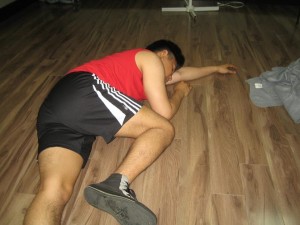Stress fractures involves partial break in the bone. The injury involves thin cracks in the bone and can develop in the tibia, navicular, metatarsals, talus, calcaneus, ribs and femur.
Unlike with other types of fractures, they do not develop after a traumatic event. The fractures are brought about by repeated forces or blow on the bone throughout an extended period. Due to this, stress fractures typically occur in the bones of the legs from the high forces placed on them during weight-bearing activities.
Stress fractures are prevalent among athletes who increase the training levels rapidly in a short time. If training progresses quickly than our bones can adapt, excessive strain will allow a stress fracture to develop.

Indications
- Generalized area of pain and swelling
- Affected area feels tender to the touch
- Pain is aggravated during weight bearing
- Pain generally settles with rest but might not settle altogether
- Discomfort during activity might be worse and later eases before resuming after
- Discomfort might start to manifest earlier during a workout
When it comes to stress fractures, they are diagnosed using a combination of assessment and tests such as MRI, X-ray or bone scan. An X-ray does not often show the fracture but might reveal areas where bone attempted to heal around it. If questionable, a bone scan or MRI might be required.
Management of stress fractures
The treatment for stress fractures usually involves resting the affected part. In case a weight bearing bone is affected, this requires limiting any weight bearing activity. This is done by using crutches or a walking boot.
The healing phase for a stress fracture is between 4-8 weeks. During this period, the activity responsible for the injury must be avoided, but other forms of exercise can be done after 1-2 weeks if pain is not triggered.
When the bone is completely healed, the individual can gradually resume the aggravating activity. It is recommended to start at a low level and steadily increase the intensity and duration if the symptoms are not triggered.
More Information / Disclaimer
The information posted on this page on stress fractures is for learning purposes only. Learn to recognize and manage bone injuries including stress fractures by taking a standard first aid course with Mississauga First Aid.
